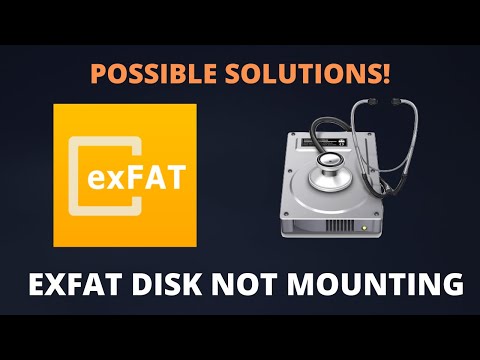Connie Yang is the primary columnist in the computer field at iBoysoft. She is enthusiastic about sharing tech tutorials on data recovery and operating system-related problems resolution. Over the years, Connie has published many computer-related guides and introductory articles.
Mounting exFAT Disks on macOS: APFS Conversion & Format Timestamped
1. 00:00 💻 External drives not connecting on macOS 11, but cross-platform is not destroyed, try solutions in Disk Utility.
2. 01:01 🔍 Mac default format is APFS, but this video offers a solution for mounting exFAT disks on macOS.
3. 01:45 ⚠️ If your exFAT disk is not mounting on macOS Big Sur/Monterey, try converting it to APFS.
4. 02:31 💡 Erase and start over if your exFAT disk is not mounting on macOS, but try other options first by opening the view menu in the disk.
Erasing a disk will wipe out all content on it, you can use iBoysoft Data Recovery for Mac to recover files from the unmounted external hard drive quickly.
Here's how:
- Download, install, and open iBoysoft Data Recovery for Mac on your Mac computer.
- On the main interface, select your unmounted external disk and click Search for Lost Data.
- After scanning, preview the found files.
- Select your wanted files and click Recover to save them to a different destination.
5. 02:54 💡 Erase the APFS container and change it to exFAT to resolve the issue of the disk not mounting on macOS.
6. 03:31 💡 Format exFAT disks on macOS to avoid mounting issues caused by unsupported allocation unit sizes from Windows formatting, and reformat on macOS to solve the mounting issues without data loss.
7. 04:22 💡 Make sure to select "Show All Devices" in Disk Utility, then skip any error messages and run First Aid on the disk to see what's going on.
8. 05:15 🔧 If the process doesn't help, you may have to format the disk again, but the video aims to help solve the issue and welcomes feedback and other techniques.
Mounting exFAT Disks on macOS: APFS Conversion & Format Video Summary
The video provides a solution for mounting issues with an exFAT disk on macOS, without deleting any data.
Backup and reformat the drive on macOS to make the exFAT format work on Windows.
Try selecting "Show All Devices" in the view menu and mount the disk in Disk Utility.
If the issue persists, consider reformatting the disk, and share any alternative techniques in the comments.
FAQs about mounting exFAT disks on macOS: APFS conversion & format
- QCan you convert exFAT to APFS?
-
A
You can only reformat a exFAT disk to APFS on Mac by erasing all data on it and then allocate APFS for it. This will make data loss. Back up your data before reformat the disk to APFS.
- QHow to format to APFS on Mac?
-
A
1. Connect your external disk to your Mac.
2. Go to Disk Utility.
3. Select the external drive from the left sidebar and click Erase.
4. Name the disk, choose APFS as the format, and select GUID Partition Map as the scheme.
5. Click Erase.
You can only reformat a exFAT disk to APFS on Mac by erasing all data on it and then allocate APFS for it. This will make data loss. Back up your data before reformat the disk to APFS.
1. Connect your external disk to your Mac.
2. Go to Disk Utility.
3. Select the external drive from the left sidebar and click Erase.
4. Name the disk, choose APFS as the format, and select GUID Partition Map as the scheme.
5. Click Erase.


